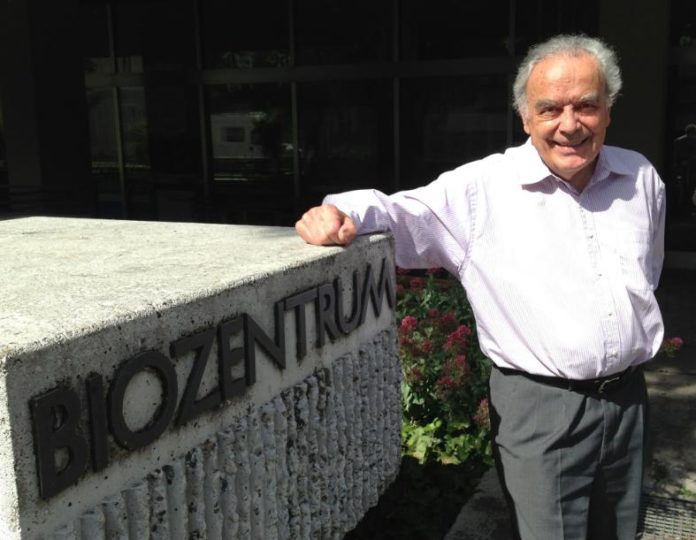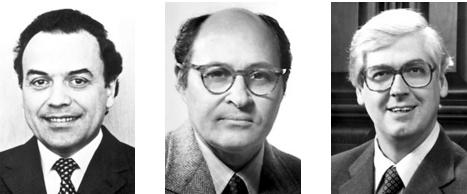
Back in a distant 1978, three scientists won the Nobel Prize in Physiology or Medicine «for the discovery of restriction enzymes and their application to problems of molecular genetics.» Time has shown that Hamilton Smith, Daniel Nathans, and Werner Arber have greatly helped us understand life itself.
“Exchange of genetic material has widely been observed in practically all living organisms. This suggests that genetic exchange must have been practised since a long time ago, perhaps ever since life has existed. The rules followed by nature in the exchange of genetic information are studied by geneticists. However, as long as the chemical nature of the genetic material remained unknown, genetics remained a rather abstract branch of the biological sciences”, Arber explained in his Nobel lecture.
Werner Arber (1929-) is a Swiss microbiologist and geneticist who, although retired, still follows the latest developments in science and technology. Until last year he was president of the Pontifical Academy of Sciences, at the Vatican. Ciencia del Sur corresponded with professor Arber about his research, his daily life, and his vision about science.
He initially studied at the Federal Institute of Technology in Zurich and then went on to pursue his PhD at the University of Geneva. He also done research at the University of California at Berkeley and the University of Southern California, and taught molecular biology at the University of Basel.
Today he is sure that his main contribution to science has been helping understand the logic of biological evolution, which paved the way for major advances in genetic engineering and biotechnology.
-Is the molecular biology you taught in Basel in 1971 very different from today’s?
After my doctoral education starting in 1953 at the University of Geneva, followed by a postdoctoral year at the University of Southern California in Los Angeles, I started in 1960, again at the University of Geneva, as a project leader to study radiation effects on bacteria and their viruses (bacteriophages).
In 1971 I moved to the University of Basel as a professor of microbial genetics. At that time it was already known that DNA filaments carry genetic information of relevance for life manifestations of living organisms. But one still did not know to read the genetic message and to explore its functions systematically.
-How did you become interested in bacteria? Why did you focus on their biochemistry?
Bacteria are autonomous single-cellular organisms with a generation time of roughly one hour. Therefore, one obtains in one or two days of growth in liquid media and appropriate temperature large populations of progeny from the input bacteria. Scientific investigations can easily be done with non-pathogenic bacteria and also with their bacteriophages.
-How did you arrive at the idea of restriction enzymes?
When I started my research in 1960 on radiation effects, I unexpectedly run into a phenomenon called host-controlled modification. Upon changing the kind of host bacteria for the propagation of a bacteriophage, it sometimes happens that only one infected cell in about 100,000 produces bacteriophage progeny. This progeny can then further propagate on its second host, but it may encounter strong limitation of growth in its former host strain.
We experimentally observed that the DNA of infecting bacteriophages in bacterial hosts not producing phage progeny becomes rapidly degraded after infection. In subsequent experiments we could demonstrate the high efficiency of this restriction reaction, which acts also against foreign bacterial DNA upon its penetration into cells of the restricting host.
As to the adaptation to the new host by rare bacteriophages, we were able to identify a host-specific methylation of the surviving phage genome at strain-specific “recognition” sites.
In conclusion, the infecting microbial DNA grown on another host strain may have some methyl groups at other sites, so that the sites identified by the endonuclease of the new host strain will fast cleave the invading phage genome into fragments. Only rarely can a fast site-specific methylation by the modification enzyme prevent the inactivation by fragmentation of the invading foreign DNA.
The modification enzyme also methylates efficiently all strain-specific recognition sites in the concerned bacterial genome in order to prevent any cleavage of the host genome by the cells’ own restriction enzyme.

-Did you foresee that your research would be applied in genetic engineering?
Yes, we expected that one would be able to isolate the restriction enzymes. These were expected to serve to systematically fragment genome DNA and to sort out particular DNA fragments in order to determine under appropriate conditions both their nucleotide structures and their biological functions.
At that time, it had already been known that in the microbial world it occasionally happens that a DNA segment became inserted into a plasmid or phage genome, serving thereby as natural vector for the foreign gene and allowing under appropriate conditions the propagation of the DNA segment in question upon the replication of its vector molecule.
-What is the current application of your discoveries?
Genetic engineering became possible by the availability of various restriction enzymes in the early 1970s.
-Why is interdisciplinary research so important?
I had started my experimental work in the 1950s as an electron microscopist, working with bacteriophage mutants acting as natural gene vectors. Thereby obtained results stimulated me to also undertake studies on the relevant microbial genetics and then also to explore nucleotide structures and biological functions of genetic information. Major insights into biological processes result often from interdisciplinary approaches.
-What is the future of molecular biology?
In recent years more attention has been given to study effects of cohabitation of different kinds of living organisms in the same habitats. Think, for example, on microbiomes, i.e. mostly symbiotic effects between microorganisms and higher plants and animals, including human beings.
Other fields of impact of environmental factors on life functions of individuals also deserve additional attention. A still fully unknown process must have been promoting the origin of life on our planet Earth.
Possibly, astrophysical methodologies can help to stepwise acquire knowledge on life existing perhaps on some exoplanets. If so, are the fundamental properties of life identical at various sites in the Universe?
-Did your life change after winning the Nobel Prize?
When I unexpectedly received the Nobel Price at the age of 49 years, I tried not to strongly change my scientific and my private life in what I succeeded to a certain extent. Nobel laureates are often asked by various groups of people to render them some service. I thereby learned fast to act selectively and to only occasionally give a positive answer. Many of these tasks enriched indeed my life.
-But you were still able to work and do research, right?
Yes, in the last two decades of my full-time employment I intensively explored experimentally spontaneous mutagenesis in microbial populations, i.e. the driving force of biological evolution. I am still impressed to have thereby received insights into the laws of nature for biological evolution.
Nature is thereby quite inventive and it uses a number of different methods to occasionally provide to individuals capacities to adapt to changing habitats. One can assign the occasionally produced novel mutants to three natural strategies of genetic variation. These are (a) local changes in the nucleotide sequence of the genome, (b) the rearrangement of a DNA segment within the genome, and (c) the acquisition of a relatively short segment from a foreign genome by horizontal gene transfer.
Functional properties of novel variants are compared to those of parental individuals by Darwinian natural selection. In general, novel genetic variants provide, by far, not always capacities for an evolutionary advance. It is remarkable to see how carefully mother Nature thereby proceeds in order to provide to the population the possibilities both, to adapt to alternative living conditions, and to preserve the genetic capacities of the concerned population.
Specific products of genes that we call “evolution genes” are known to act as variation generators or as modulators of the frequencies of genetic variations, whereby non-genetic elements such as a structural flexibility of a nucleotide displaying a short-living tautomeric form, can also contribute to spontaneous genetic variation.
The here described natural laws of genetic variation have been established upon experimental work with bacteria. There is increasing evidence that these laws are also of relevance for the biological evolution of higher, multicellular organisms.

-What do you think is your main contribution to science?
I consider our insights into the natural laws of biological evolution as one of my contributions to scientific knowledge. Part of my early work strongly contributed both, to structural and functional knowledge on the genome of living organisms.
-How do you rate Europe’s university education?
European university education can fully compete with university systems on other continents. Some of the European universities belong to the leading institutions world-wide.
-What is the workday of a Nobel laureate like?
My daily work still follows scientific advance, but without making myself essential contributions.
-You presided the Pontifical Academy of Sciences, of which Galileo was also a member, but it is also an institution created by Clement VIII, the pope during the burning of Giordano Bruno. Has the institution evolved since?
In 1981 I became a member of the Pontifical Academy of Sciences (PAS). Since its original constitution in 1603, its structure and functions have been adapted to new needs several times.
-What is the Academy currently working on?
Nowadays, the PAS follows various aspects of advances in scientific knowledge and its applications. The Academy spends thereby attention to both, obvious and possible impacts on humanity and its sustainable development. Relevant conclusions and recommendations are brought to the attention of the Church. For the past almost seven years I had the privilege to be the president of the PAS.
-Is there a conflict between science and faith?
In my mind, both, science and religious beliefs can be a fruitful basis for obtaining deep insights into the world in which we live.
-Do you have any hobbies?
As emeritus, I consider science as one of my hobbies. But I also like hiking in the landscape, and I read both daily and periodic newspapers.
-Did your wife help and support you throughout your career as a scientist?
Before our marriage, my wife had been a secretary in a laboratory for microbial analysis. She still has wide interests and she steadily provides highly welcome help and support to me.
What did you think of this article?
Director ejecutivo de Ciencia del Sur. Estudió filosofía en la Universidad Nacional de Asunción (UNA) y pasó por el programa de Jóvenes Investigadores de la UNA. Tiene diplomados en filosofía medieval y en relaciones internacionales.
Condujo los programas de radio El Laboratorio, con temática científica (Ñandutí) y ÁgoraRadio, de filosofía (Ondas Ayvu).
Fue periodista, columnista y editor de Ciencia y Tecnología en el diario ABC Color y colaboró con publicaciones internacionales. Fue presidente de la Asociación Paraguaya Racionalista, secretario del Centro de Difusión e Investigación Astronómica y encargado de cultura científica de la Universidad Iberoamericana.
Periodista de Ciencia del Año por el Consejo Nacional de Ciencia y Tecnología (2017). Tiene cinco libros publicados.







 (3 votos, promedio: 4,67 de 5)
(3 votos, promedio: 4,67 de 5)






